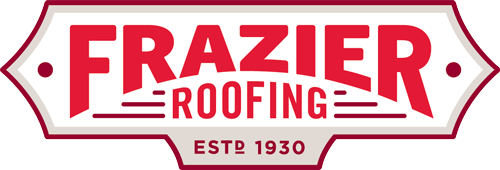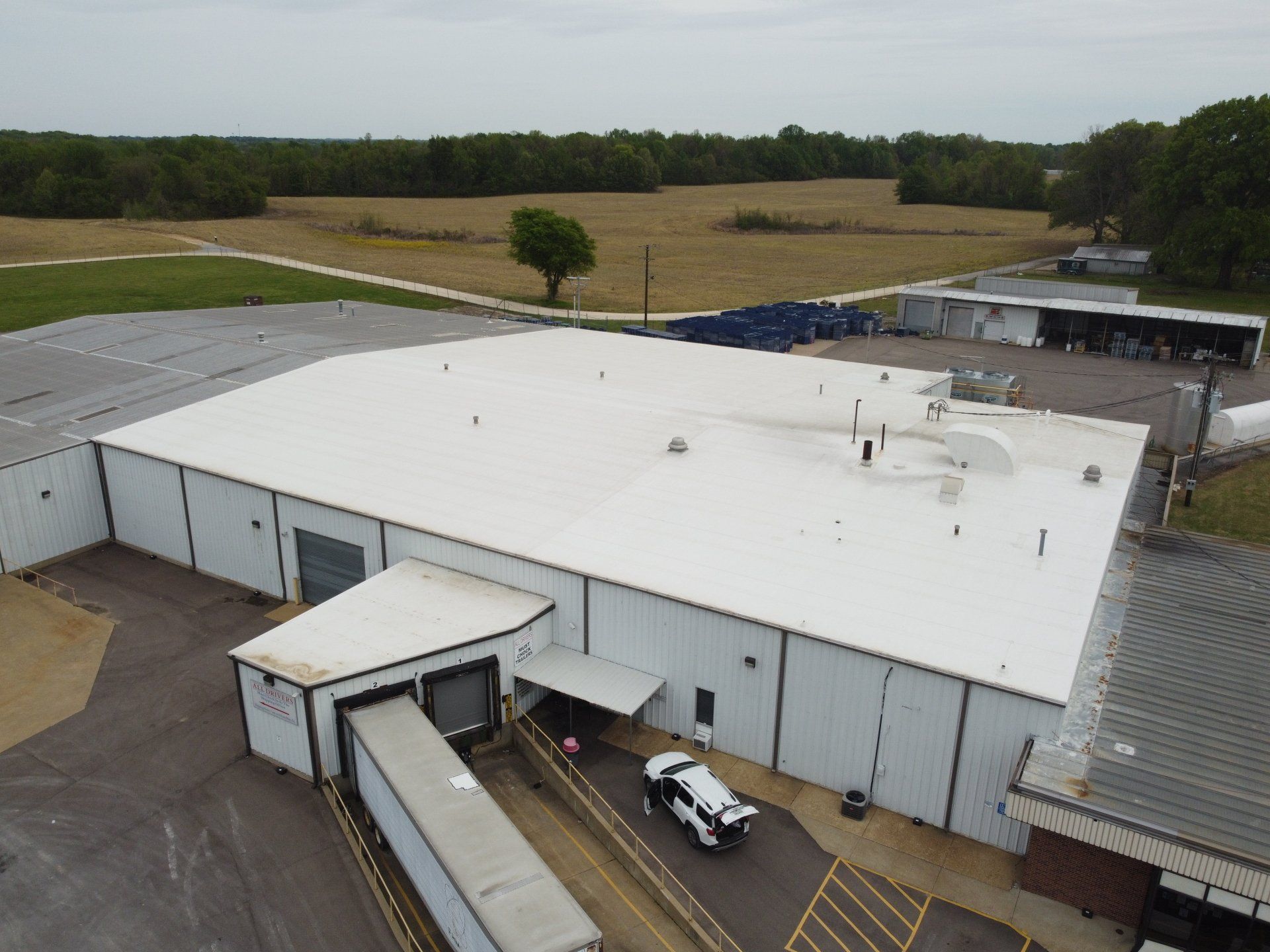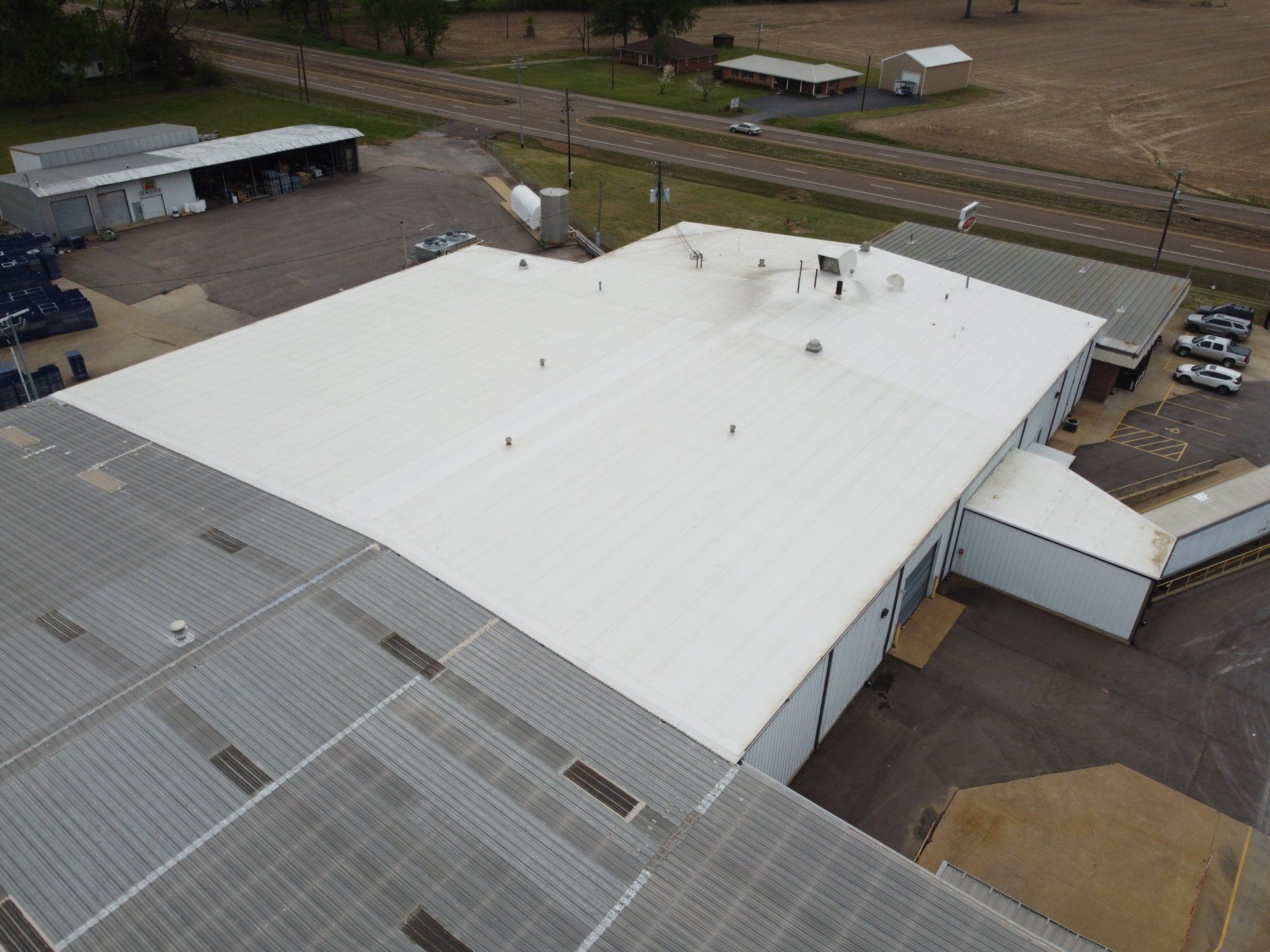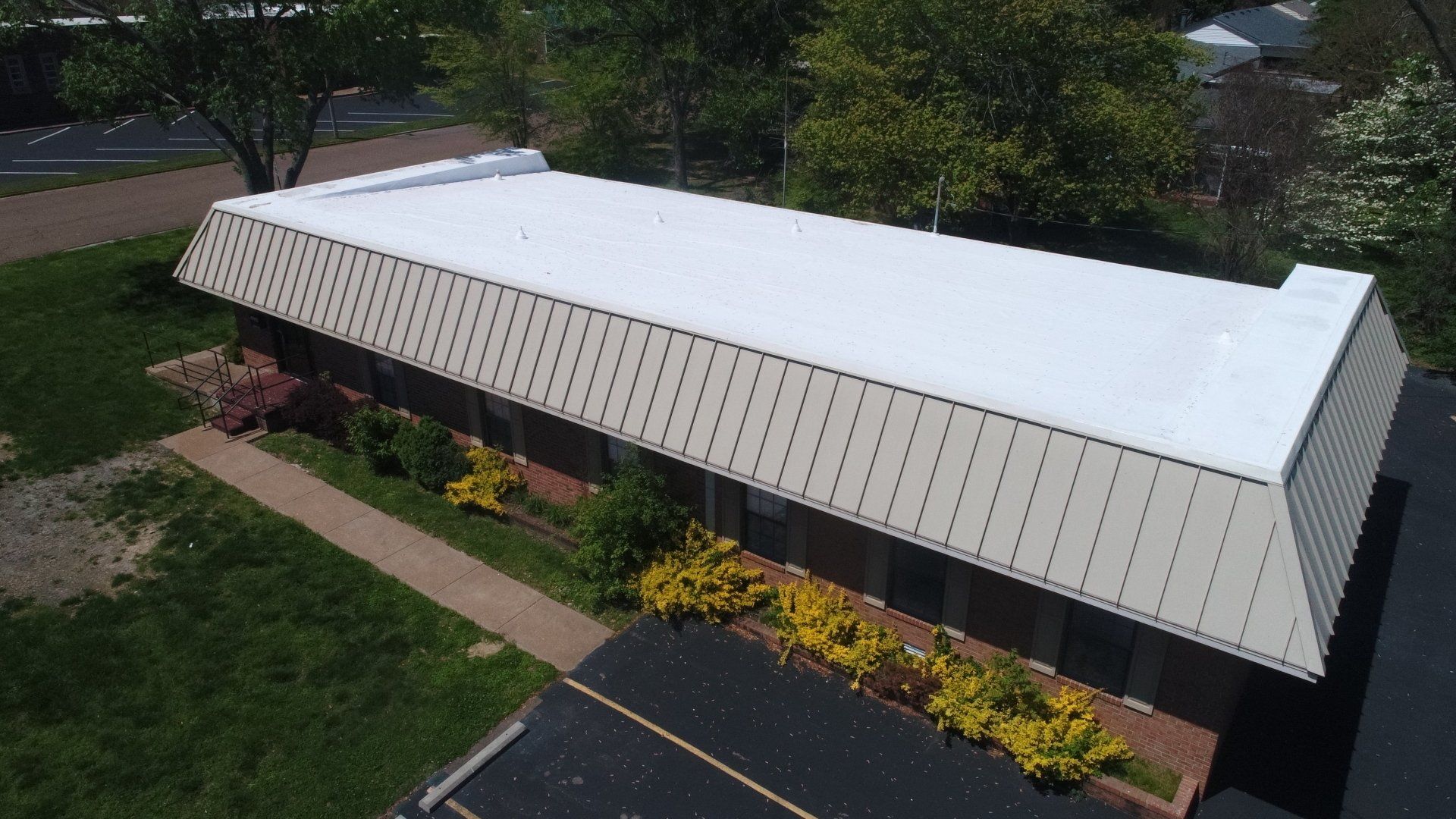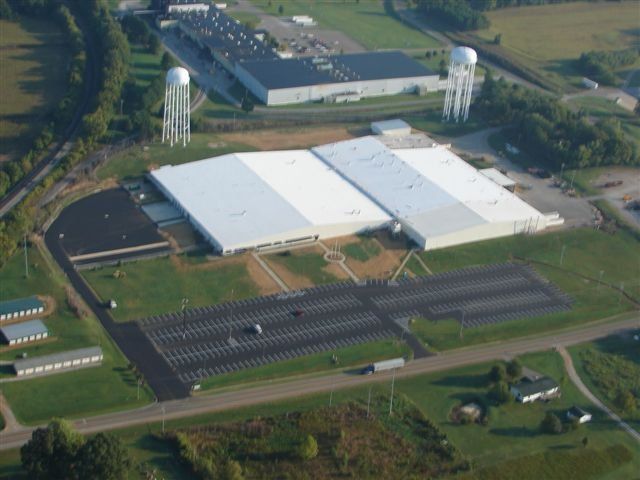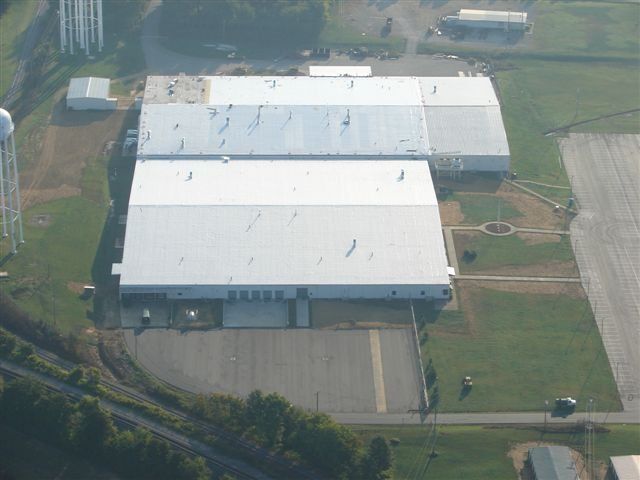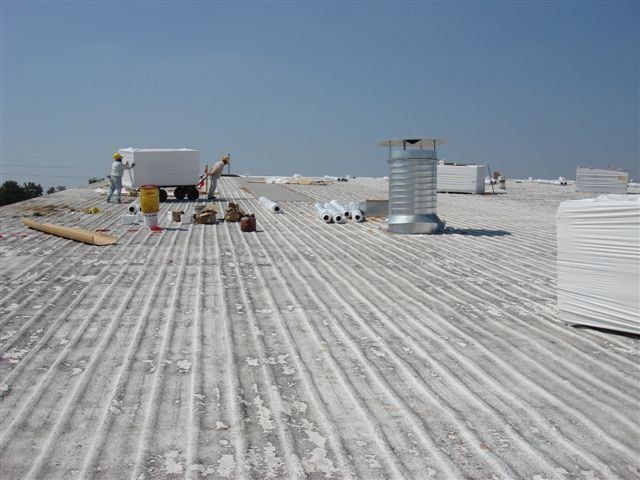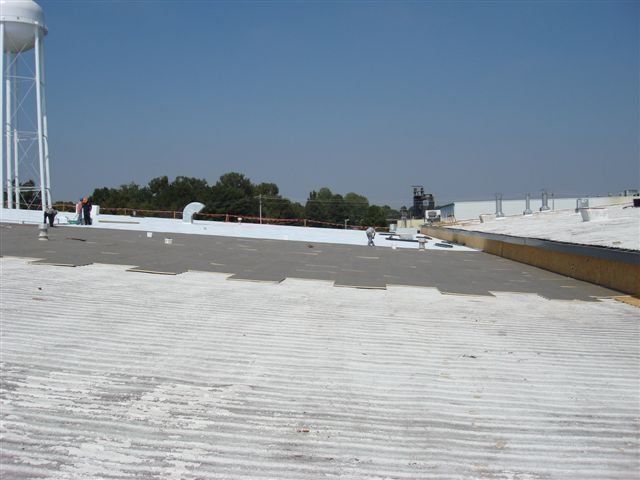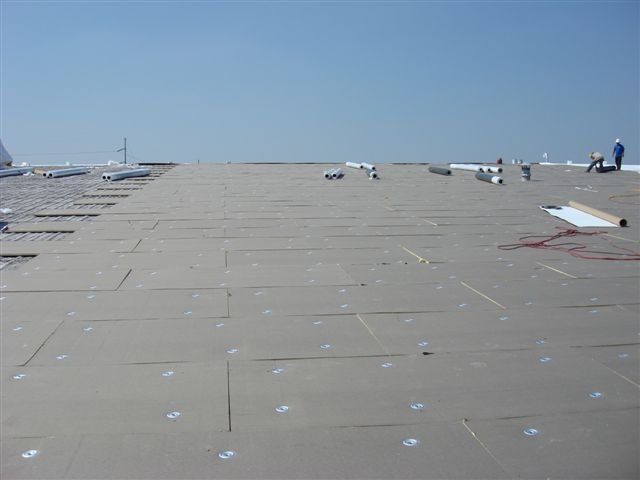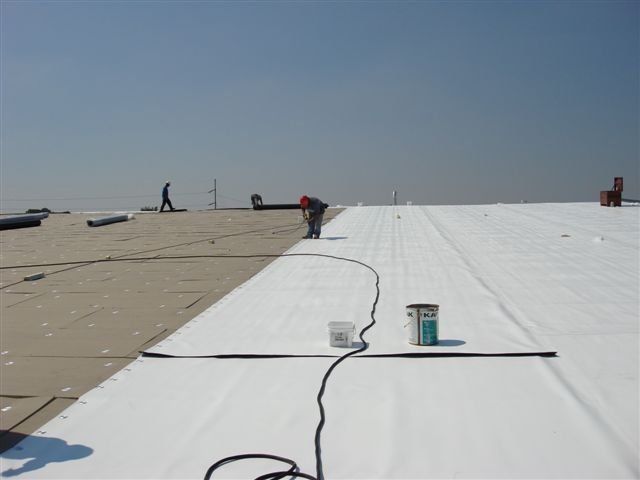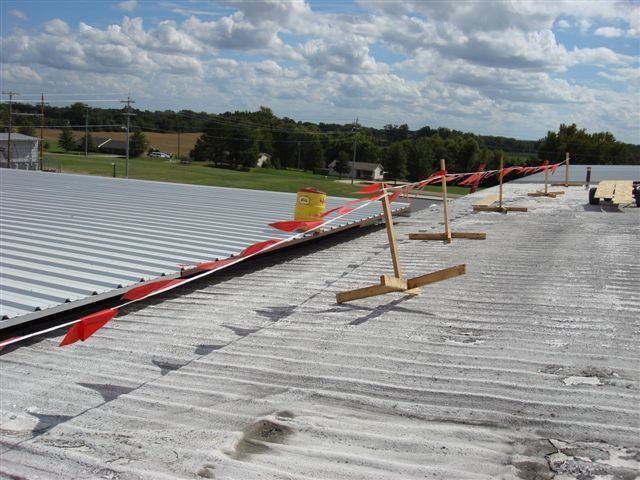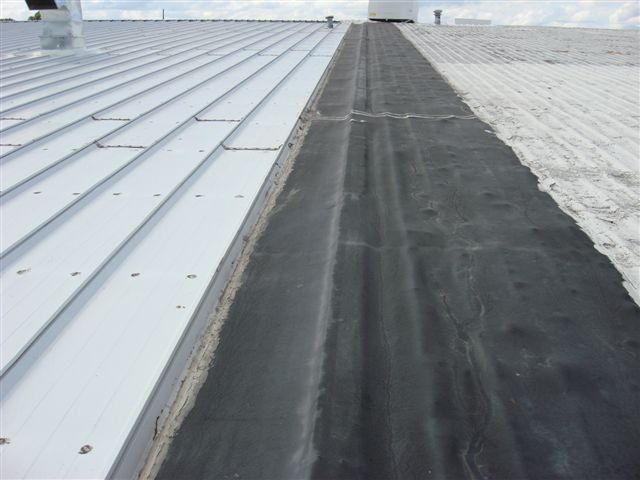Single Ply Membranes Roofs in Dyersburg, Tennessee
Thermoset Roof Membranes (Once Manufactured by Colonial Rubber in Dyersburg, TN)
Ethylene Propylene Diene Monomer (EPDM) or "Rubber" EPDM materials have been used as a roofing material here in the United States since the early 1960's. EPDM is a synthetic rubber material that is formulated with extensive flexibility for use as a membrane sheet roofing.
EPDM is manufactured as a vulcanized (cured) membrane. Uncured EPDM is manufactured for use as a flashing material. EPDM can only be bonded to like material with an adhesive when making seams. This adhesive can be seam tape and some liquid adhesives. EPDM membranes range in thickness of .045mils to .120mils. Only fully cured EPDM will bond together creating a molecular linkage. EPDM membranes exhibit good resistance to ozone, UV rays, weathering, and abrasions. EPDM has good low temperature flexibility. EPDM is resistant to some acids and solvents. On the other hand, exposure to animal fats, vegetable oil and petroleum based products should be avoided.
Thermoplastic Roof Membranes (including PVC membranes and TPO membranes)
Polyvinyl Chloride (PVC) polymers were originally produced in Germany during the 1950's. Many of the buildings in downtown Alamo, TN have this type of roof. The basic chemical resin is a relatively hard material that requires the addition of plasticizers to make it supple and pliable for use as flexible membrane roofing. PVC sheets are reported to be resistant to bacterial growth, many industrial chemicals and plant root penetration. PVC roof membranes are fire resistant and have good seaming characteristics. PVC is not chemically compatible with bituminous materials.
TPO roof membranes are compounded from a blend of polypropylene and ethylene-propylene rubber polymers. TPO membranes exhibit positive physical properties, such as heat aging, cold temperature flexibility, puncture resistance and tear strength. They are resistant to damage from animal fats, hydrocarbon oils, and vegetable oils. They will not support the growth of microorganisms.
A summary of Thermoplastic Roof membrane characteristics, both chemical and physical, materials allow them to be repeatedly soften when heated and harden when cooled. Typically, there is no chemical cross-linking in the membranes compound. Because of the nature of the membrane, Thermoplastic sheets typically are seamed by heat-welding with hot air.
Key Points
EPDM has tried in the industry to eliminate manual "applications" of glue and solvents; new designs are ongoing to take the human factor out of the waterproofing procedure. This goes with seam tape, seam flashing, and pre-molded parts - all for ease of application. Many different manufacturers have different formations in the EPDM manufacturer process to help eliminate shrinkage, thin spots, race tracking, etc.
Whatever single ply roof is chosen; all surfaces are not good candidates for this type of roof. Very important considerations should be given such as foot traffic, mechanically equipment maintenance, roof heights, and many more. This product has been installed on several buildings in Union City, TN. Please give considerations to all in making a selection.
Project Example
Briggs and Stratton
Newbern, TN
Roof System: Mechanically Attached TPO
Manufacturer: Versico
Installed: September 2007
The roof on the building was a spray polyurethane foam that was un-repairable. We retro-fited the building with a 1 inch polyisocyanurate roof insulation and installed a .045 mil mechanically attached white TPO roofsystem.
